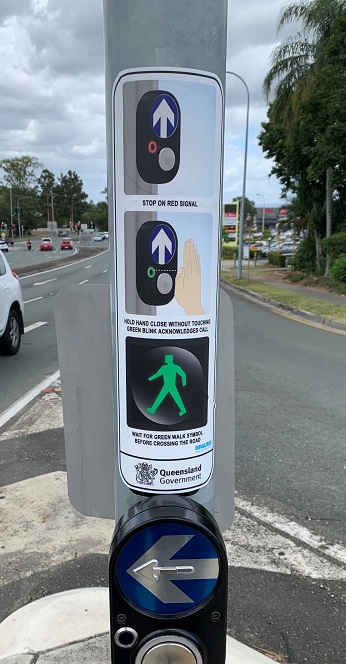Automation of pedestrian crossing signals at intersections
We have made changes to the way some of our pedestrian crossings work – reducing the need to touch the pedestrian button at traffic lights.
Automated crossings
Pedestrians don't need to touch the pedestrian call button at an automated intersection. Automated pedestrian lights are usually used in capital city CBD locations with consistently busy pedestrian crossings.
In Queensland, pedestrian signals may be either fully automated or partially automated.
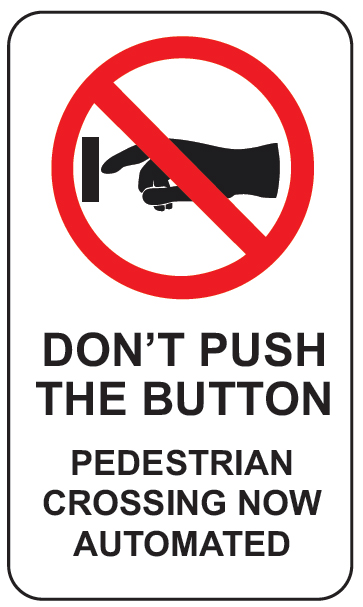
Fully automated
Pedestrians don't need to push the button at fully automated crossings for the lights to change—lights will change automatically.
Fully automated crossings are marked with a sign or a sticker above the button.
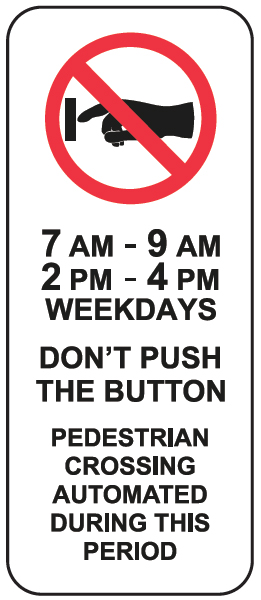
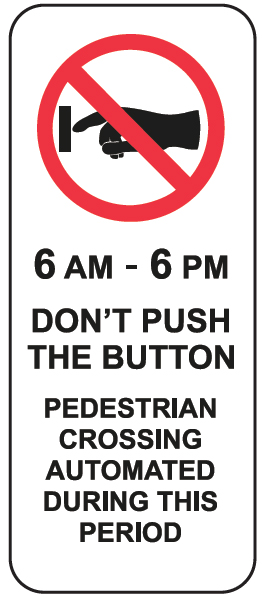
Partially automated
Partially automated pedestrian signals are only automated during busy periods. Outside of these times the button will need to be pressed.
Partially automated crossings are marked with a sign or a sticker above the button that indicates the times that the crossing is automated.
On-demand crossings
On-demand pedestrian signals are most common type of pedestrian signal. They only activate when required which reduces the impact on vehicle traffic.
Touch
You can push a pedestrian button with your hand or elbow to activate a change in the pedestrian signals.
This method is used at signalised pedestrian crossings across Queensland with lower pedestrian volumes, to avoid interrupting vehicle traffic flow.
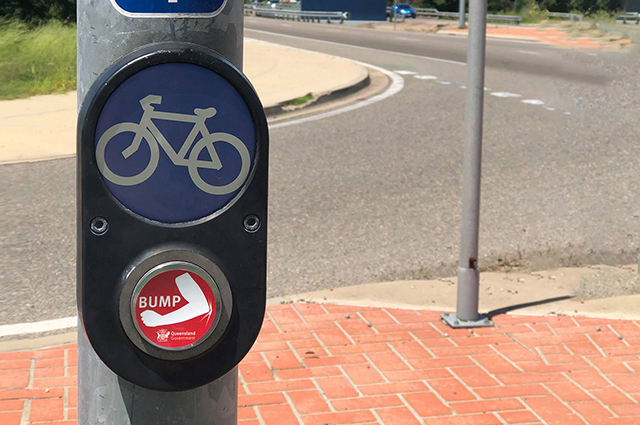
Touchless/Sensor
In August 2021 we started a pilot program in the Greater Brisbane area for touchless pedestrian crossing buttons. Pedestrians can wave their hand in front of a movement sensor to trigger the signal to cross the road.
Touchless crossings are marked with a sign or a sticker above the button that indicates that the crossing is touchless.
We will use data on performance, road safety, traffic impact, transport operations and user feedback to plan any future expansion of the trial.
